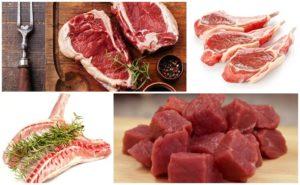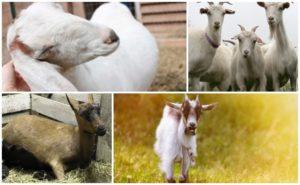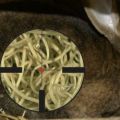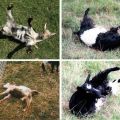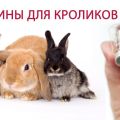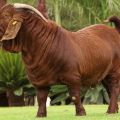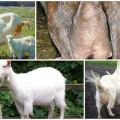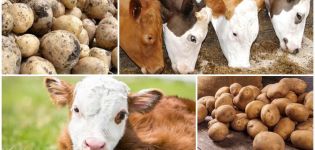Causes of Foam in the Mouth of a Goat and Treatment for Thiamine Deficiency
Breeding goats is a challenge. Horned pets are often exposed to diseases. If a goat regularly has foam at the mouth, it means that the animal needs urgent veterinary assistance. As a rule, an unpleasant phenomenon signals a malfunction in the animal's gastrointestinal tract. The sooner the diagnosis is made and treatment is prescribed, the more chances of keeping the pet alive.
The main causes of foam in the mouth of goats
The reason for the appearance of foam from the mouth of an animal can be a whole bunch of diseases and ailments.
- The problem lies in vitamin B1 deficiency. Thiamine is vital for the normal functioning of the animal's neuromuscular system. Vitamin is responsible for the production of energy for the full life of the body. Thiamine deficiency affects the nervous system of a horned pet. Most animals get sick at 4-5 months of age.
- Another reason for the formation of foam at the mouth of an animal is tympania. Due to the fermentation of the accumulated food, the rumen stops and swells. The cause of the trouble should be sought in poor feed quality or improperly formulated ration.
- In infancy, kids often suffer from dyspepsia. The trouble lies in the upset of the gastrointestinal tract. At this point, babies have mild diarrhea, weakness and bloating in the abdomen. The problem is solved by temporarily weaning the kid from food and drinking the pet with 1% saline solution.
- A malfunction in the baby's digestive system also occurs as a result of a banal overeating of milk. The kid loses appetite, vomiting, weakness and diarrhea worries him. The pet's tummy is swollen. Daily fasting and herbal decoction can help a small glutton. The infusion is prepared from 60 g of horse sorrel and chamomile. Raw materials are poured with a liter of water and heated for 30 minutes.
- Foam at the mouth of a young animal often indicates the presence of tapeworms in the body. Uninvited guests can cause cysticercosis of the liver. As a result of complications, not only the "natural filter" is hit, but also the cardiovascular system. Unfortunately, in some cases, sick kids have to be destroyed.
Concomitant symptoms
With thiamine deficiency, the disease overtakes the goat suddenly. Poor appetite and mild diarrhea are indicative of malaise. At first, the goat randomly moves around the pen, and then begins to walk in a circle. The animal often stumbles on level ground, falls. Due to the loss of coordination of movements, the pet stands for a long time, staggering, legs wide apart. In some sick animals, vision and hearing are rapidly deteriorating.
The situation is complicated by spasms of the extensors, while the pet's head is involuntarily thrown back to the neck. The development of the disease takes from several hours to 3 weeks. With tympanic disease, the goat loses its appetite. The animal behaves restlessly, every now and then glances at the belly and every minute shakes its tail. The pet has shallow breathing, the belly is swollen. The scar area is tense due to the accumulation of gases.

What to do if a goat starts to foam
Pet treatment depends on the type of disease and the degree of damage to the animal's body. With thiamine deficiency, a 6% solution of thiamine hydrochloric acid is used. The medicine will help to make up for the lack of vitamin B1.
Russian experts prefer to deal with the disease with large doses of the drug. The animal is injected with 200 to 500 mg of the solution. The dosage depends on the body weight of the goat. Half of a single dose of the drug is administered to the pet intravenously, the other part is administered intramuscularly.
The procedure is repeated 2-3 times. If the treatment was started within 2 days after the first signs of the disease appeared, the prognosis is favorable. 15-20 hours after the first injection, the animal's condition should improve. Foreign experts prefer to administer the drug intravenously. 7-11 mg of thiamine are administered per 1 kg of animal weight.
Treatment of bloating in a pet is carried out using the natural remedy "Tympanol". The drug is administered through the oral cavity using a special tube - a probe or a rubber bottle. The product is dissolved in water (1:10). The dose of the drug is calculated based on the weight of the animal. For every kilogram of goat mass, there is 0.5-1 mg of "Tympanol".
In the absence of a medicine, you can help the trouble with proven old-fashioned ways:
- A mixture of sunflower oil and any vodka. Healing agent is given to the goat at the rate of 1 ml of the mixture per kg of weight.
- Activated carbon. For 1 dose, 8-10 tablets are enough. Coal is diluted in warm water.
- 2% solution of ammonia. Single dose - 50 ml.
In the initial stage of the disease, there is a chance to get by with "little blood". Simple measures will help to rid the scar of harmful gases:
- Gentle massage of the left side of the animal's belly.
- Bringing pets to an upright position. For this, the goat is taken by the front legs and raised, forcing the animal to stand on its hind legs.
- Rhythmic stretching of the pet's tongue by hand. Thus, belching is achieved.
- Forcing the animal to actively run. Perhaps, in this way it will be possible to achieve the release of gases.

In the acute course of the disease, one has to resort to a puncture in the area of the hungry fossa. Otherwise, the pinched vessels will more and more squeeze the internal organs of the goat, and the matter will end in the death of the animal. This procedure can only be entrusted to a veterinarian.
Potential danger
Foaming in the oral cavity of an animal is a clear signal that the pet is in poor health. If you let things take their course, malaise threatens the horned beauty with death.
How to prevent the problem
A properly formulated diet will help prevent bloating in a goat. First of all, it is necessary to conduct an inventory audit. Do not give your pet spoiled, moldy foods. Poorly dried or frozen grass is not suitable for feeding a goat. The main components of the daily diet of an animal are roughage. Concentrated additives and grains are severely restricted.
